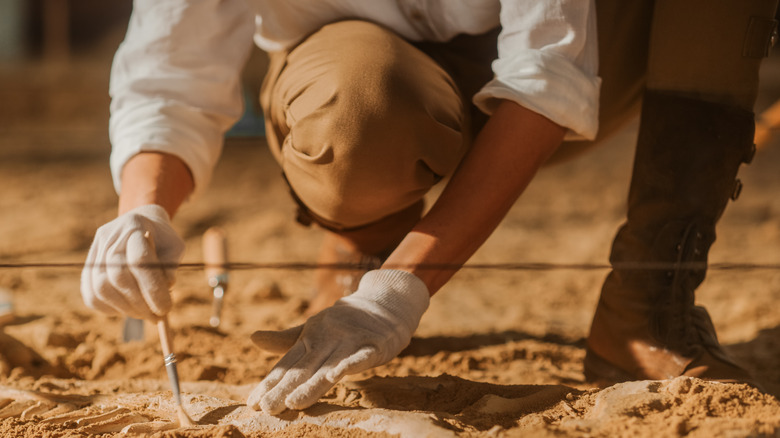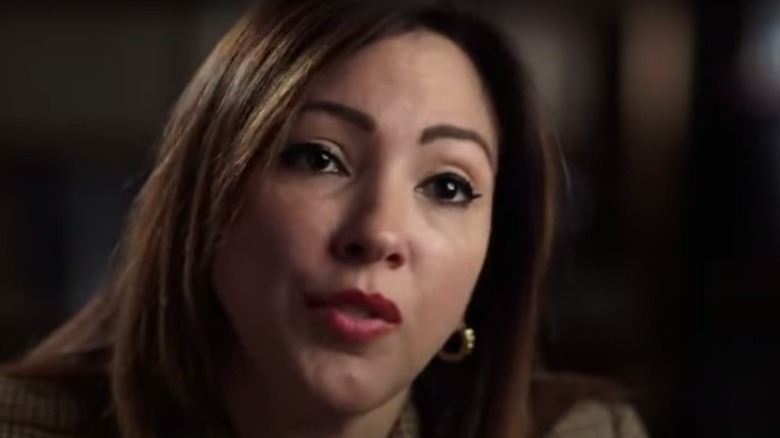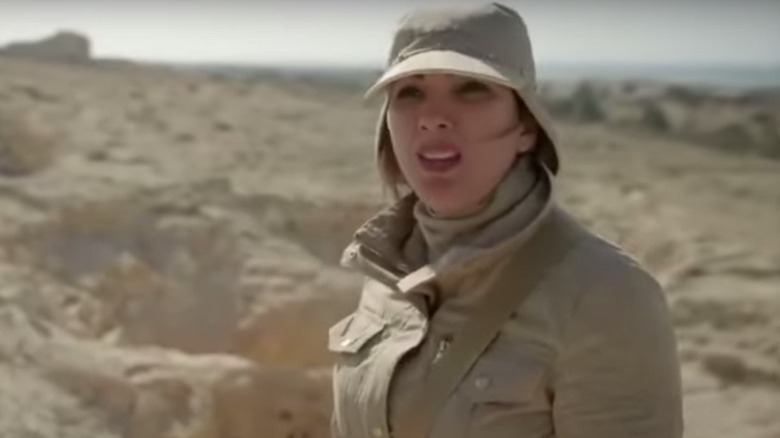Who Is Kathleen Martínez, The Woman Who's Led The Search For Cleopatra For Almost 20 Years?
On November 10, Egypt's Ministry for Tourism and Antiquities made a startling announcement via Facebook. As CNN translates, the message concerned an ancient tunnel, almost a mile long, discovered near Egypt's Mediterranean coastline. The tunnel seems to have been the artery of a major temple complex, and may lead to the long-lost tomb of Egypt's most celebrated queen, Cleopatra. Part of the tunnel, or other tunnels that branch out from it, are under the sea.
The leader of the archaeological team that excavated the tunnel is Dr. Kathleen Martínez of the University of Santo Domingo. She told CNN that the site has yielded some 1,500 artifacts so far, including a hoard of coins that feature the faces of Cleopatra, her ancestors of the Ptolemy dynasty, and the Ptolemies' original patron, Alexander the Great. But Dr. Martínez made clear that the greatest prize of all will be Cleopatra's tomb. "It will be the most important discovery of the century," she said.
A passion for history
Dr. Martínez herself (above) has a fascinating story. For one thing, she was originally a lawyer. And not just any lawyer — Knowledge at Wharton called her "one of the Dominican Republic's most sought-after criminal attorneys." Dr. Martínez grew up in an intellectual, European-Caribbean household; her parents owned the largest private library in the West Indies, and she triumphed in chess, swimming, judo, and other pursuits throughout her youth — Wharton also refers to her as "an overachiever by nature." Her first case as a lawyer saw her successfully defend what her colleagues saw as an impossible case.
Sometime around 1990, Dr. Martínez reread Shakespeare's "Antony and Cleopatra" and realized that the "rare Egyptian" was more than the sexy, hotheaded femme fatale of legend. Cleopatra was multilingual, precociously intelligent, an able stateswoman who wrote monographs on medicine and law. The parallel was stunning. "Every day I got more and more interested in this woman," Dr. Martínez told Wharton. She began studying this enigmatic queen on her own, eventually giving up a plan for a master's degree in finance and planning instead for an M.A. in archaeology, in pursuit of her ancient heroine.
Tantalizingly close
Dr. Martínez's interest in Cleopatra was consuming. It was a true passion, and like all passions it cost her dearly. According to the National, Dr. Martínez's then-husband (with whom she had children) refused to move to Egypt. They split up, and Dr. Martínez threw herself into her new field.
By 2002, Dr. Martínez's house was "covered with maps" (per Wharton). She had arrived at a theory as to where Cleopatra lay buried: in a temple to the gods Isis and Osiris, probably with her lover and political ally, the Roman Mark Antony. Where could such a temple be, though, that hadn't already been discovered? Dr. Martínez knew of a temple site on the sea near Alexandria, called Taposiris Magna; the temple had been robbed and eroded by the creeping sea level, but it could well be the place. Other problems, less theoretical, awaited her in Egypt: endless visa complications, hostile customs agents, a brief arrest. But it was worth it. "I am 80% of the way to prove my theory [of Cleopatra's tomb]," she told Wharton in 2012. Ten years later, she may be much closer than that.


